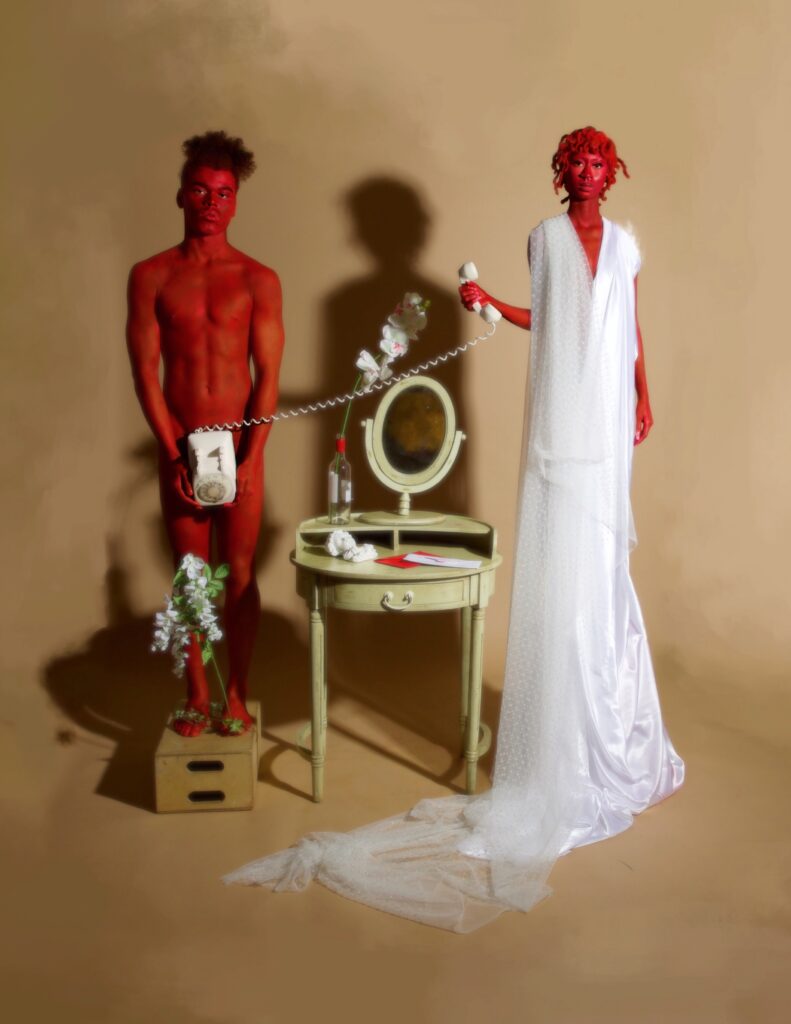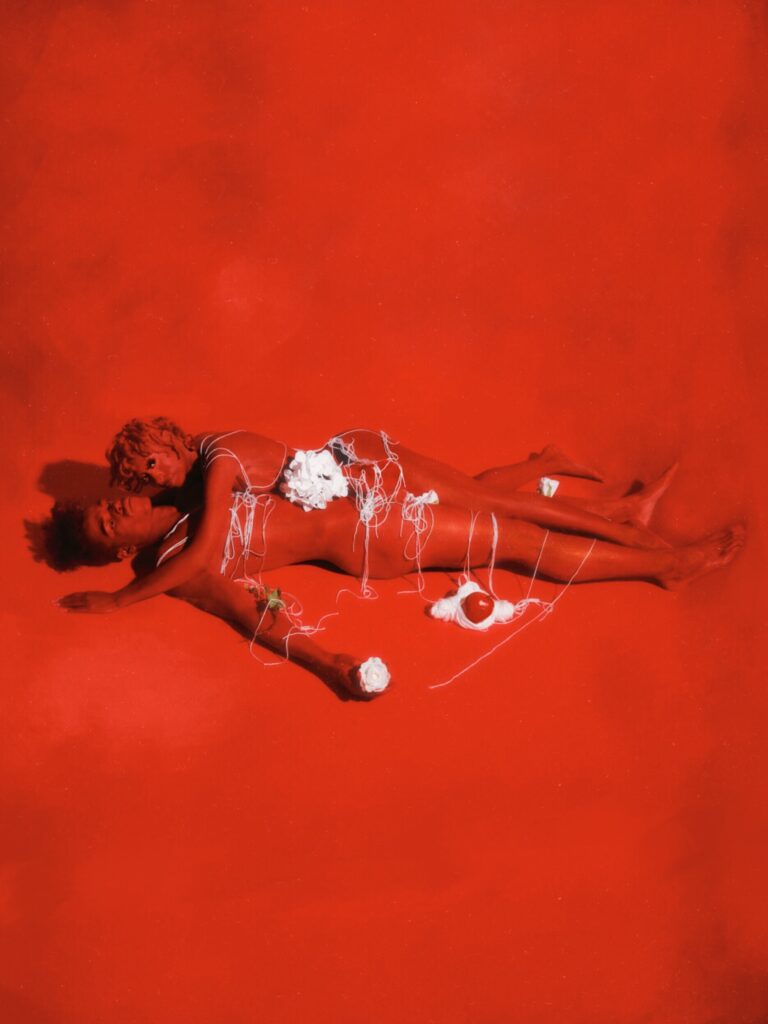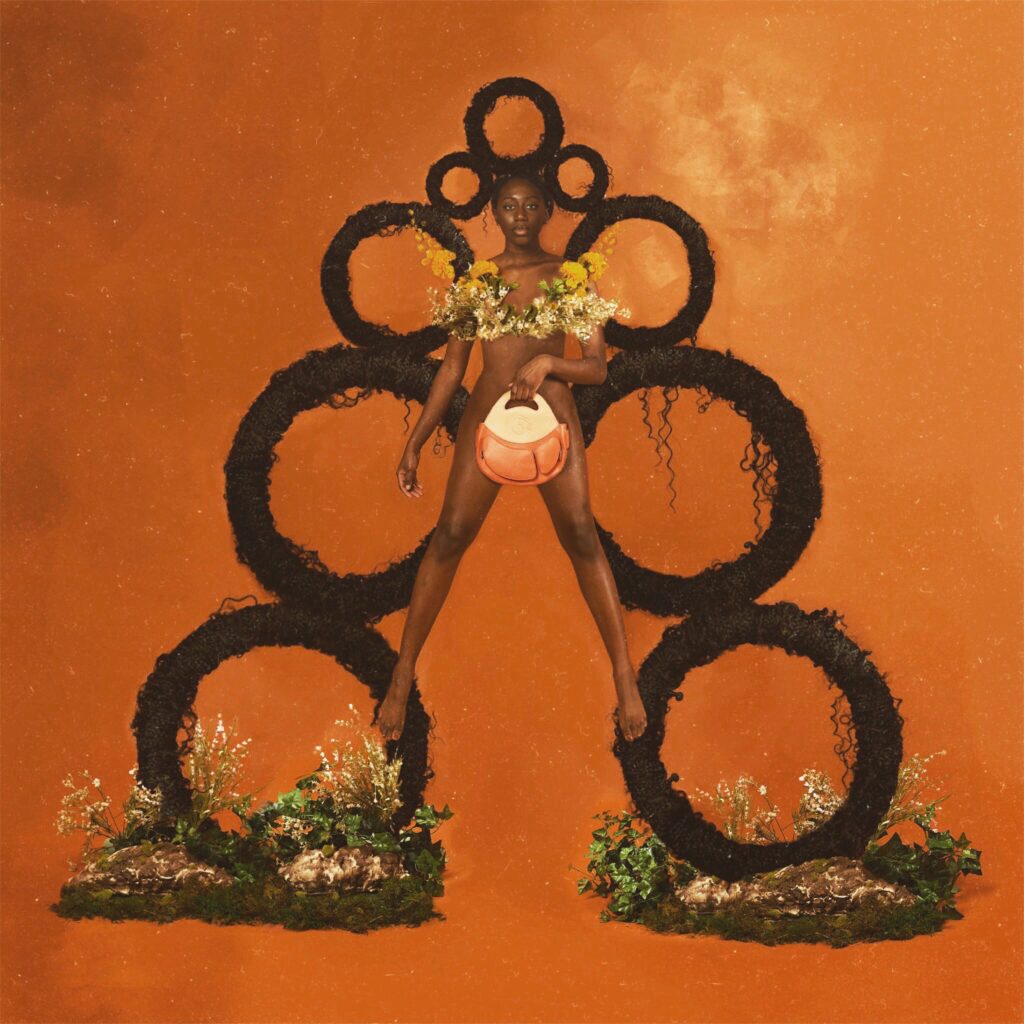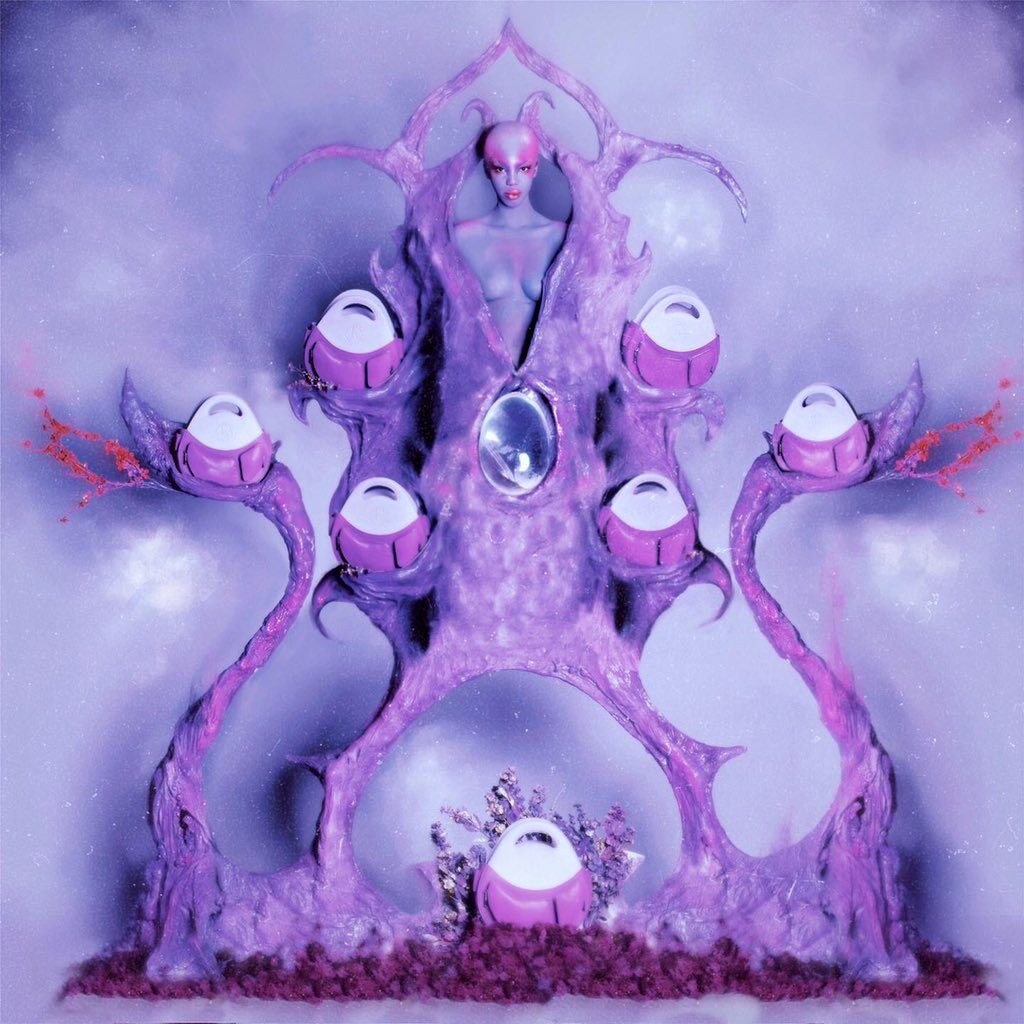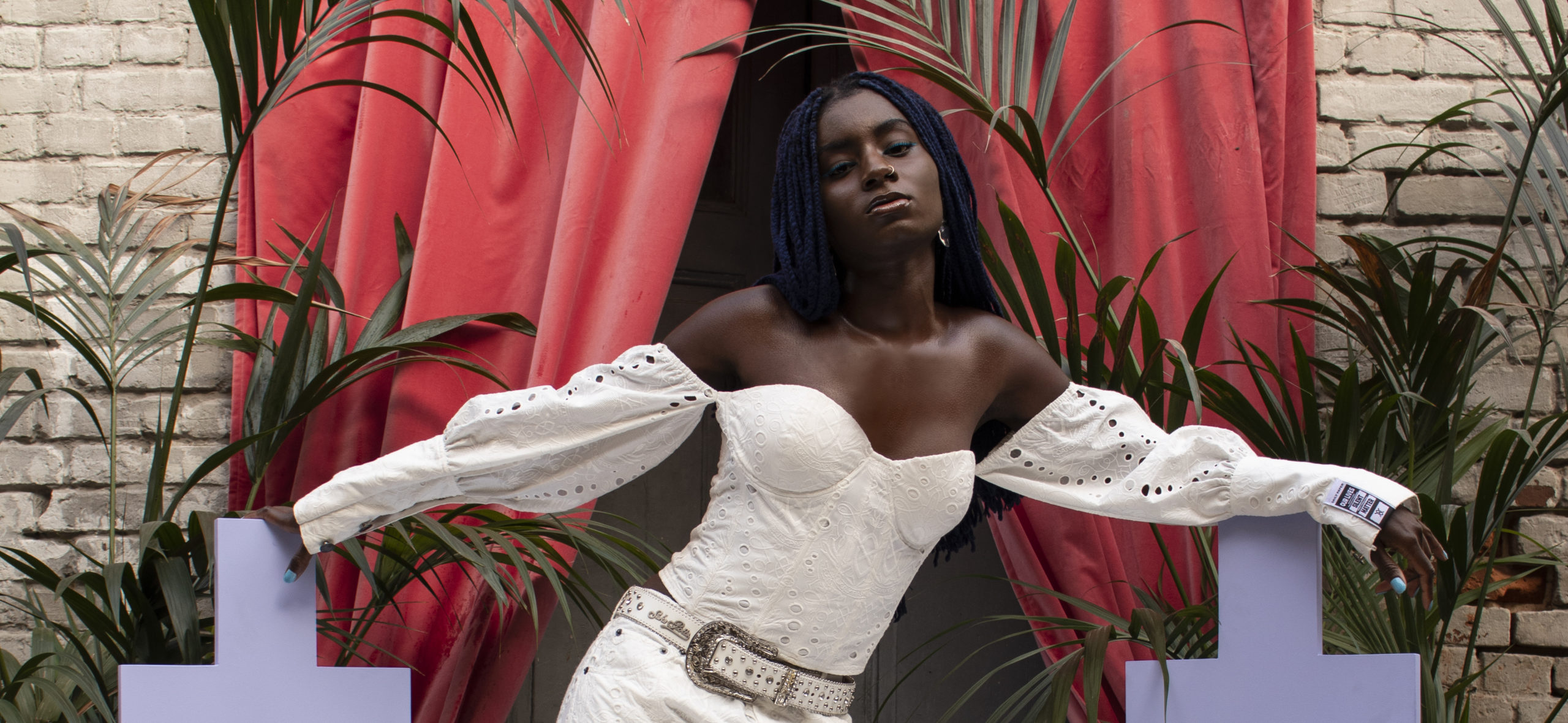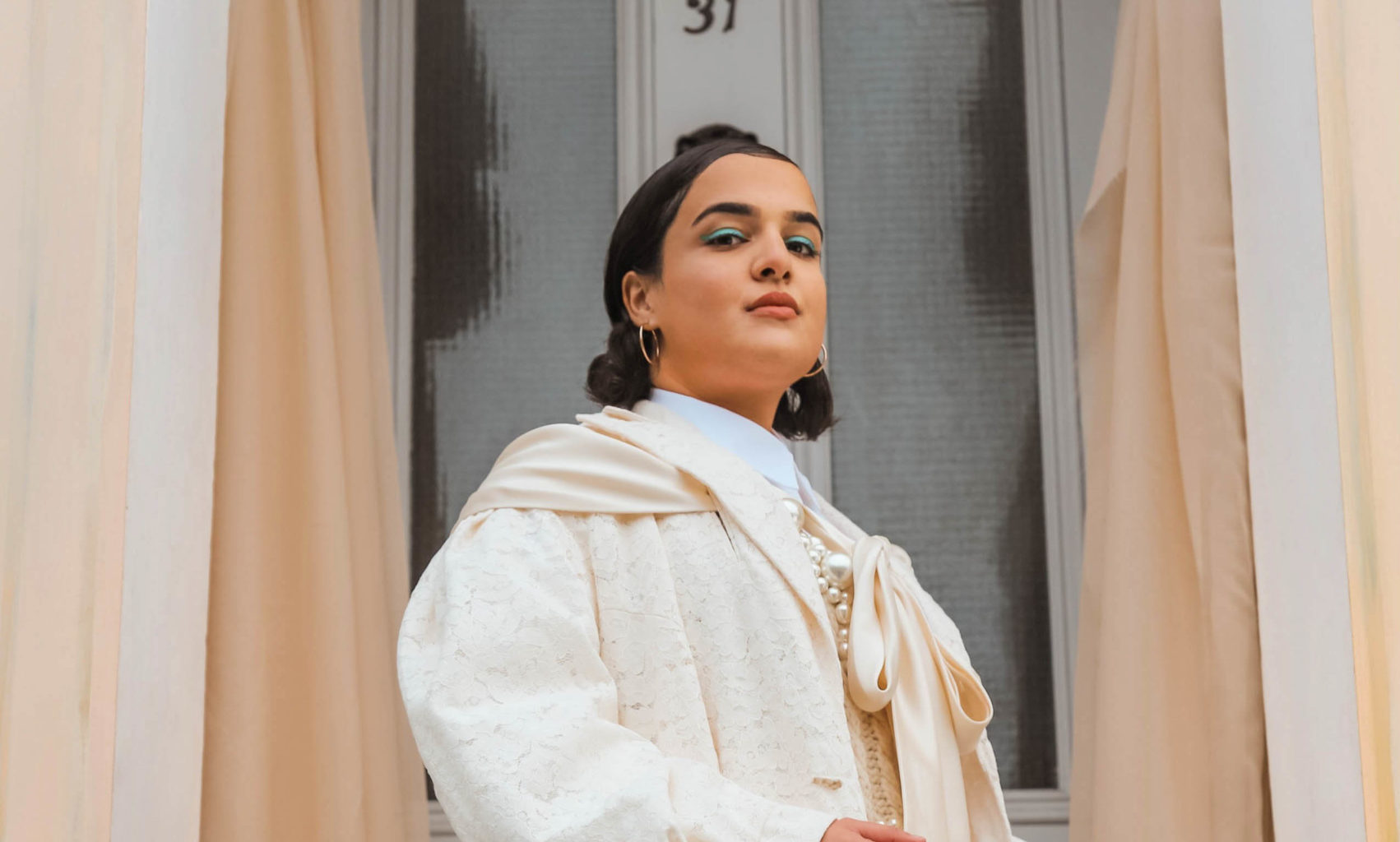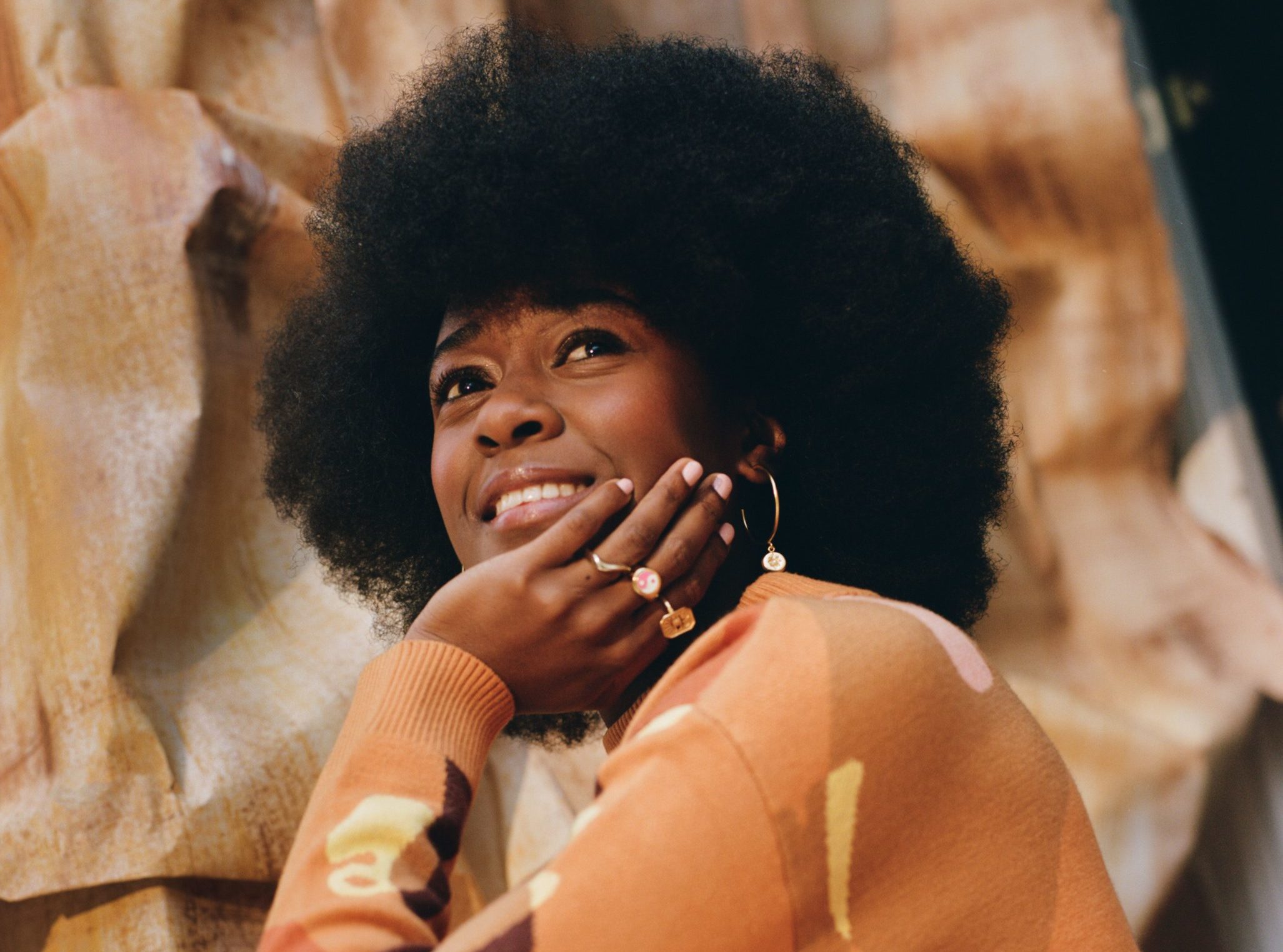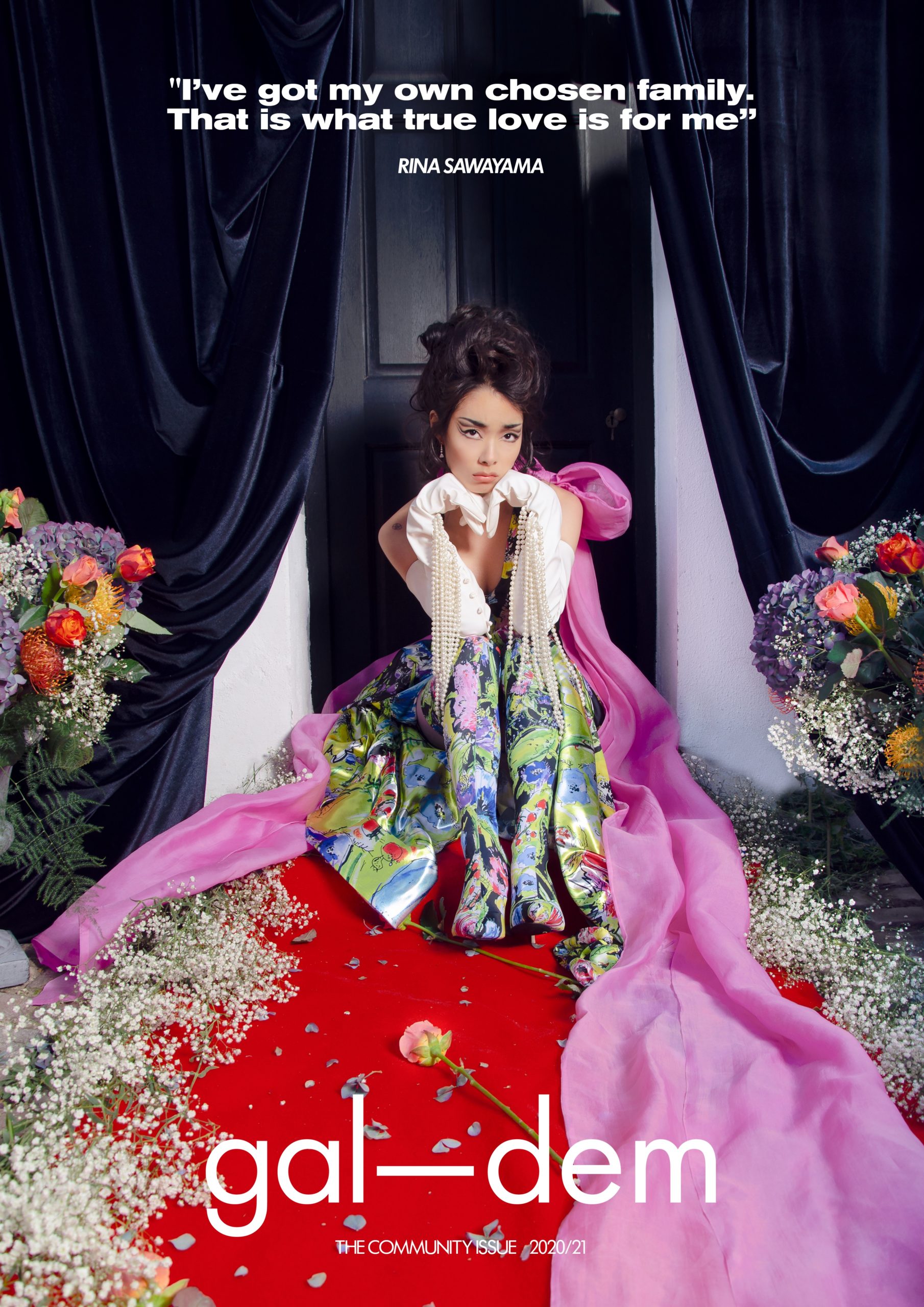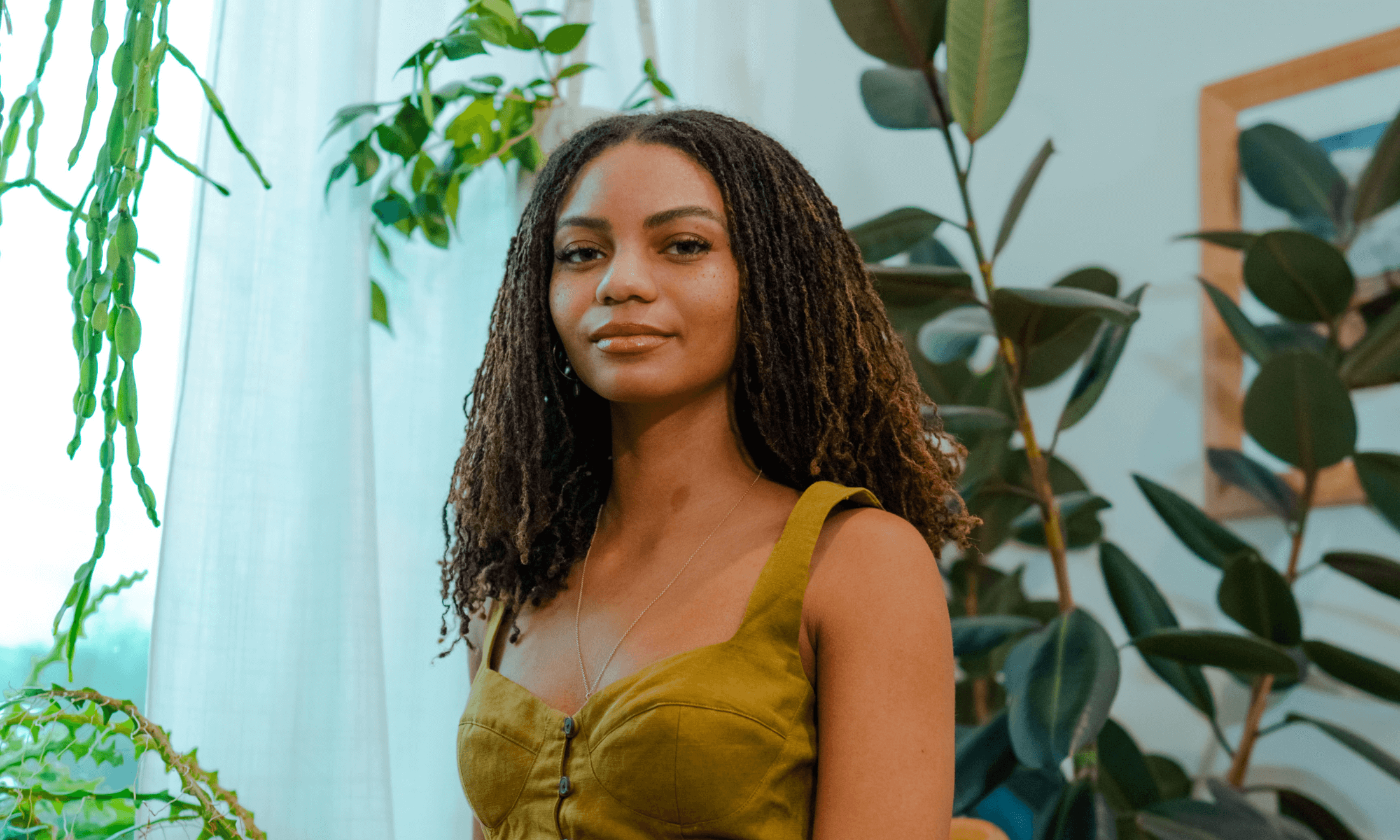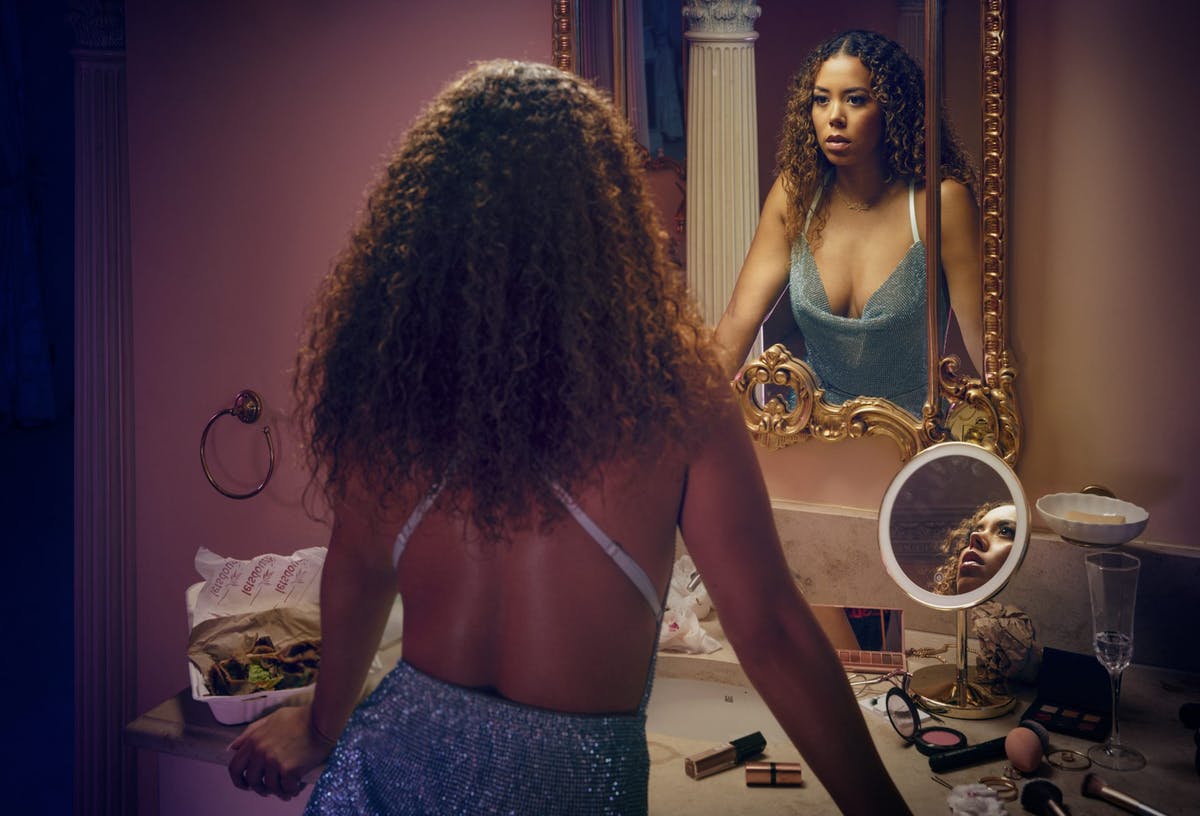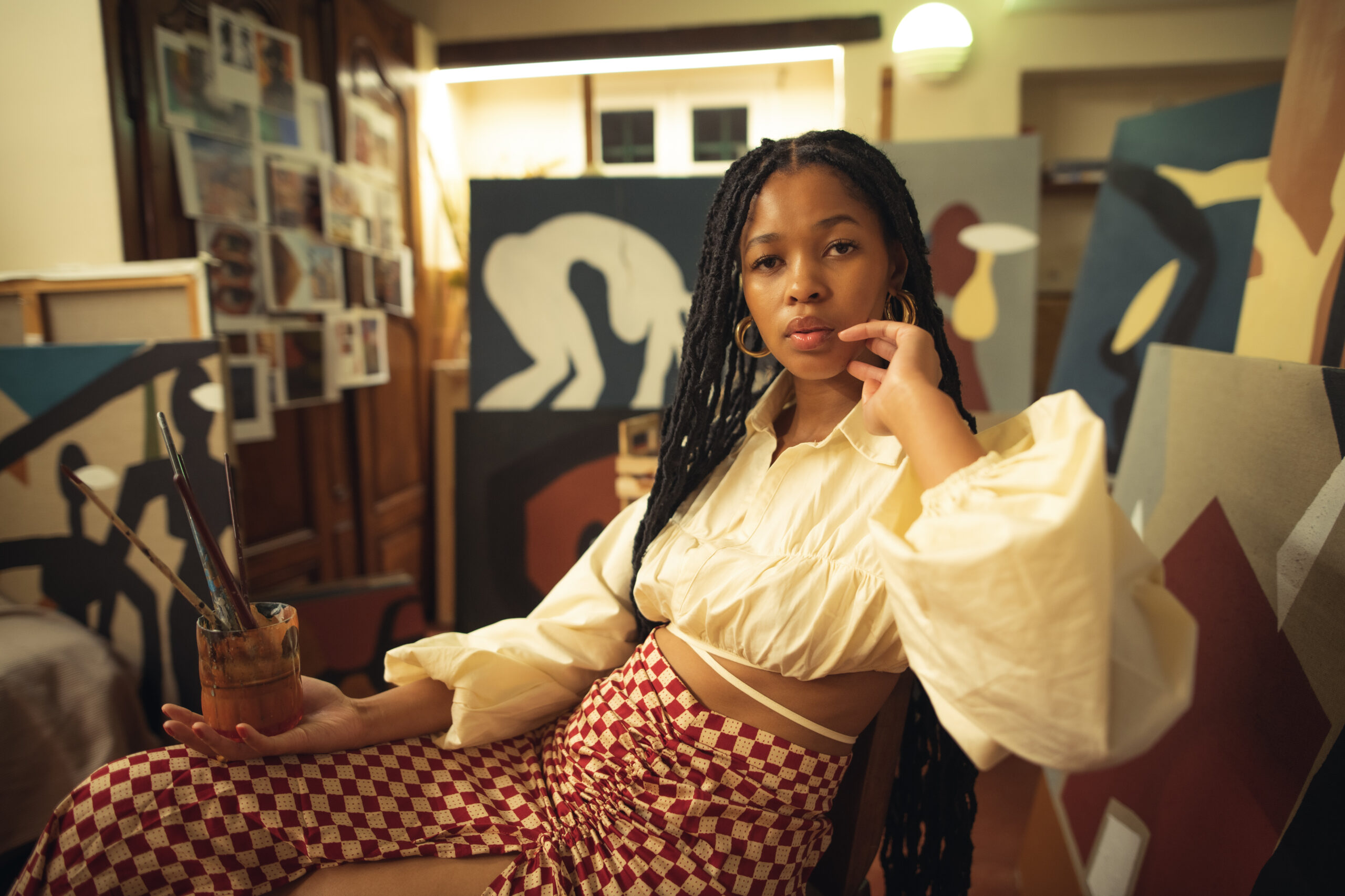
Jalen Amir
This photo series shows how lingering ex-loves haunt new relationships
Newcomer Jalen Amir presents Love and All Its Complications and talks afro-surrealism and artistic liberty.
Kemi Alemoru
18 May 2022
Atlanta-based Jalen Amir is a photographer, sculptor, and painter. The combination of these practices in one image means each photograph is a banquet of ideas, a visual feast that arrests your gaze because the longer you look the more there is for your eyes to gorge upon. Not only that but they coordinate, direct, and design all of their shoots. “I like all those things to bleed into one space,” they explain to gal-dem. “I want to let that be my selling point to say: this is who Jalen is stylistically and conceptually.”
Before they shoot an image they draw a mock-up beforehand. Every prop, each pose, each trick of the light, and every tone demonstrates the 22-year-old’s hunger to interrogate and experiment with the black image. For gal-dem’s digital cover, Jalen has shot an evocative photo series entitled Love and All Its Complications. Enlisting their friends as models, the photographs represent relationship dynamics – namely the fraught process of moving on from an old bond in search of something new with somebody else. Vividly painted red bodies contrast with stark white backgrounds and metaphor-laden accessories. It’s a simple story told through Jalen’s knack for using every bit of their finite resources to create high drama.
Though they’ve only been photographing for a few years (they started as a college freshman at Georgia State University), their work appeared in Vogue Italia in 2021 via a series of biblical shots reminiscent of a renaissance or baroque-era painting. They also shot a campaign for Homage Year, a local black-owned bag brand, where models defied gravity, suspended by towering handmade hair sculptures. In some images, they’re standing on foliage, and in others, it appears to grow from their scalp. In one futuristic shot, the handbag grows out of an alien’s lair, showing Jalen can flip from a natural palette to a sci-fi world with ease. This summer, they are gearing up for their first solo exhibition at the Collective Gallery in Atlanta.
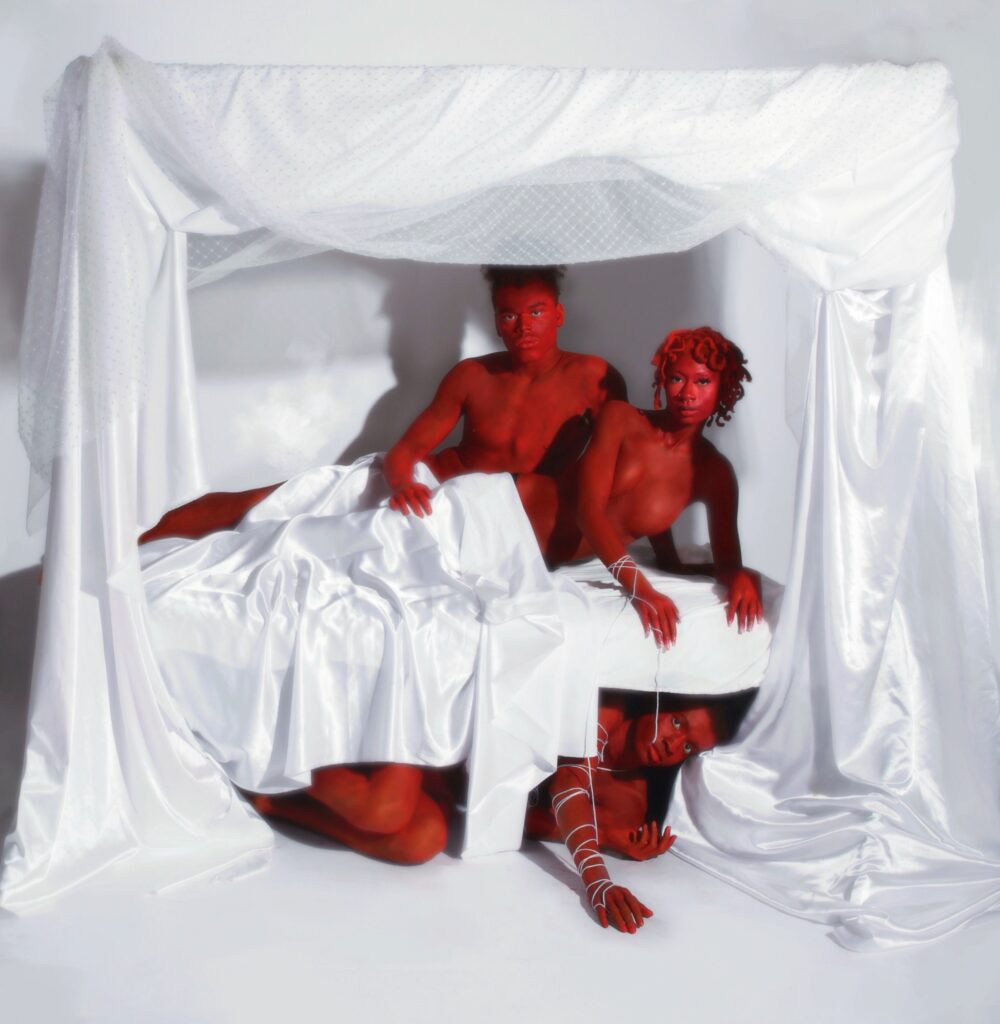
(Above) ‘The Lingering Past’ (Below, from L to R) ‘Miscommunication’, ‘Weight of Love’, photography by Jalen Amir
You could say that art is in their DNA, as Jalen reminisces about watching their father, who is also an artist, in action. “I absorbed that he was always drawing,” they explain. As a schoolchild growing up in Detroit, Jalen would draw on the back of tests if they finished too early (“I wasn’t really taking it seriously”), and later they attended a class at a library in their hometown, led by a local muralist. Jalen was so advanced that he ended up assisting in teaching the class. They moved to Atlanta by the eighth grade and have been in awe of the city ever since. Jalen tells gal-dem how the city – which has an exciting black art, music, and entertainment scene – has made them instinctively competitive with their craft. “I feel like everybody’s taste level is increasing,” they say. “I’m constantly motivated to set myself apart.”
“I’m attracted to how universal themes apply to black people: life, death, beauty, religion, political concepts”
At the heart of Jalen’s brilliance is their passion to give weight to even the smallest of details. In the image ‘Miscommunication’, even the shadows on the wall represent the distance between the lovers. The woman’s shadow, or former self, is the same height as her partner – but in the foreground, she stands taller than him showing she’s in a different place. Their colour-coded love letters remain unanswered, as do their calls. In other shots, the weight of her new relationship wears down on her ex, who is hiding beneath the surface. The strings symbolise attachment to a lingering past. “Sometimes you don’t want them to go away,” Jalen explains. “We use things to symbolise commitment like rings and the string is still wrapped around Tamir’s [the woman’s] finger. He’s more committed to this relationship, he’s wrapped up but she’s in the midst of moving on.”
As an artist, Jalen is pushing themselves to present black people in the most artistic way. Where have we not been? What are we not seeing? What new visual languages remain unexplored? Years ago, they say they realised that many of their peers were taking a domestic approach to photography, focussing more on correcting the negative or stereotypical portrayals of black life by exhibiting what our day-to-day looks like and the realities of our family structures, culture, and pastimes.
Jalen, therefore, decided to take the opposite approach: “There was a void in terms of larger concepts beyond me, the things I can’t grab and touch. I’m attracted to how universal themes apply to black people: life, death, beauty, religion, political concepts.”
Lately, they are leaning into afro-surrealism, which they say is one of the great art movements unfolding before us in popular culture – and they’re right. We are living in an age where we regularly see works that lean towards the absurd, the subconscious, the unnerving, and the illogical to unpack the black experience. “Jordan Peele did that, Kendrick’s DAMN, Beyonce’s Lemonade, Donald Glover’s Atlanta are all honest depictions of the black experience, but they’re pretty surrealist,” they explain. “I gravitate towards that,” Jalen says it’s a pushback against visceral and very literal works depicting black trauma. “I understood where that comes from. Because I feel like you can’t have too much of anything. All things in moderation, including moderation,” they add. While they think there is room for truthful and literal explorations of black realities, it is also freeing for artists to be able to play around with and distort our own world.
Being surreal allows Jalen to critique even their own work and constantly search for new symbols. “I have a tendency to lean towards objects or symbolisms that are outdated. My work looks old and museum-like and I feel like that’s what people are in awe of because it references DaVinci, blah blah blah…but is it loved because it feels more white?” What they love about the current afro-surrealist movement is the school of artists developing their own motifs, using present-day blackness to make art whether that’s our language or voice (like Lakeith Stanfield’s character in Sorry to Bother You), or aesthetic markers like press-on nails (“things that are identifiably black and seen as cheap”), or our shared experience within society.
the sketch vs the photoshoot pic.twitter.com/aTREE3pel5
— jalen amir king (@jaalenking) January 28, 2021
“Let’s stretch, challenge, mystify these [black] things and look at it through an artistic context,” they say. “That’s all that surrealism tries to do. It takes the common and puts it in this new atmosphere, and forces you didn’t look at it differently.”
While playing with the black image expands what is expected of black artists, artists still feel pressure due to our community’s anxieties about how we’ve historically been presented. For example, Jalen feels some black people, particularly older generations, are married to forms of storytelling where we look our best and are presented in a sanitised way. In a photography context, they reference the backlash against Annie Leibovitz’s shots of Simone Biles for American Vogue’s August 2020 issue; however, when Jalen first saw the images, they were moved by them and felt it was fine to show what black skin looks like in different lighting conditions. The artist thinks the need to only see glowing and super idealised versions of ourselves might perpetuate the idea that we are unacceptable in any other form and that there are only a finite number of ways to depict our community.
“Let’s stretch, challenge, mystify black things and look at it through an artistic context”
They explain: “Sometimes the sun is not bouncing off my skin sometimes I be ashy. If you say that those things are ugly, then they become ugly. But like, I thought they were beautiful because I think we’re beautiful no matter what.”
These debates around photography are ongoing and reminiscent of the split public opinion around the striking February 2022 British Vogue cover, where photographer Rafael Pavarotti appeared to darken the skin of dark-skinned African models. The images were similar to his previously lauded paintings that, in many ways, are an homage to similarly celebrated Kerry James Marshall works where the black figures are painted in an exaggerated hue. “It was interesting that the paintings were well received, but not the photos,” says Jalen. “It opens up questions of our liberty as an artist.”
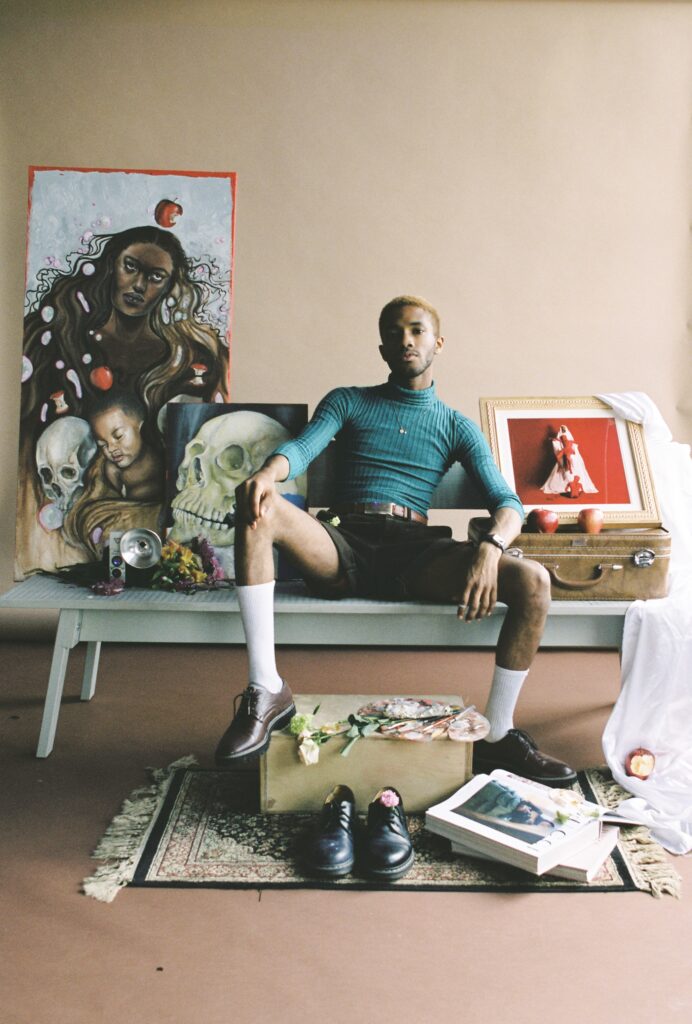
As a multi-disciplinary artist, Jalen hopes that by combining all of their practices, they can blend the worlds, blur boundaries, and experiment. “I feel like afro-surrealism is opening me up and giving me more permission to tell different stories and create new symbols,” they explain.
Jalen is laser-focused on the layered meanings within images and our reactions to them and by paying close attention to debates in art, aesthetic trends, and schools of thought the newcomer is staying ahead of the curve. They’re already carving out an aesthetic niche by creating living museum-worthy works that could only come from someone who allows for their creativity to transcend limitations.
Like what you’re reading? Our groundbreaking journalism relies on the crucial support of a community of gal-dem members. We would not be able to continue to hold truth to power in this industry without them, and you can support us from £5 per month – less than a weekly coffee.
Our members get exclusive access to events, discounts from independent brands, newsletters from our editors, quarterly gifts, print magazines, and so much more!

